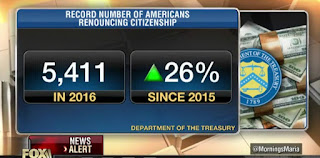
According to Robert Feinschreiber and Margaret Kent, Transnational transfer pricing audit experts are now in the process of remaking the transfer pricing landscape. Tax administrations are challenging both the scope and the depth of comparability databases. These governments are increasing asking the question, “What products or services are to be benchmarked?”
Consider one such example in which the benchmarker fails to provide the tax authority with needed information: the enterprise in question sells offal products (hearts, livers, tongues, and other cow parts) from the slaughterhouse to foreign buyers. Will the benchmarker provide comparable data?
An enterprise might need just a modicum of investment capital to enter into the business of providing benchmarking services. There are limited barriers for entry and at present there are a limited concentration of benchmark services providers. Governmental administrative database changes might “cull the herd.” Only a few benchmarked service providers might ultimately prevail.
Transfer pricing has been growing in importance, and benchmarking has become increasingly important concomitantly with this growth. But, similar to other growth industries, administrative database developments will increase competition in the benchmarking industry. Increased competition will force some benchmark service providers to face a culling-out process.
Benchmarking and Documentation
The U.S. Treasury and the OECD initiated the transfer pricing benchmarking concepts a quarter of a century ago. Many transfer pricing service providers increased their database internationally and increased the availability of financial data. Despite these efforts, governments were increasingly unhappy with the transfer pricing reports they had been receiving. We have worked with Mexico’s SAT and with CIAT to move from a NAICS database approach to direct transfer pricing comparability.

The benchmarking process is just one facet of the broader-based transfer pricing process. An enterprise needs to consider its functions, assets, and risks. The documentation process, functional analysis, financial analysis, and the economic analysis lie ahead, including company analysis and industry analysis. Then the enterprise and the government need to consider audit responses and potential tax litigation issues as part of the transfer pricing process. Governments are concerned that enterprises and their advisers put too much emphasis on database issues rather on examining the company itself.
Changes Coming to the Benchmarking Industry
The actions that governments undertake to shift the emphasis from database considerations to the company’s direct company analysis will mark a significant change in emphasis for such benchmarking enterprises. The result is quite likely to be consolidations within the industry, perhaps combining with other benchmarkers or with professionals such as economists, lawyers, or CPAs.
The benchmarker might be better served by increasing the level of its advertising expenditures. Such a benchmarker should seek endorsements from established but neutral transfer pricing professionals to provide the imprimatur necessary to withstand governmental challenges.
Need Inter-Company Pricing Advice?
Contact the Tax Lawyers of
Marini & Associates, P.A.












